Are you a Quiet Speculation member?
If not, now is a perfect time to join up! Our powerful tools, breaking-news analysis, and exclusive Discord channel will make sure you stay up to date and ahead of the curve.
The Modern format is so diverse, both quantitatively and competitively, that it can prove tough to quantify; certain players subsequently claim there is no metagame, while others focus only on tournament-winning decks. Each approach lacks some degree of nuance. Today, I'm trying to bring some of it back.
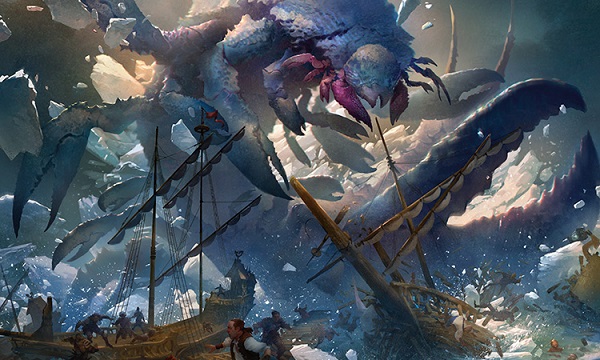
I was thrilled when I heard that Channelfireball was publishing the full list of Day 2 decks from GP Toronto: I'd have the data to really dig into the metagame for the first time in a while. Then, I got scooped. Oh well, at least the hard and tedious data entry work is done. Also, I don't agree with everything that Tobi Henke said, so consider this not only an analysis, but a response article. We'll parse the data a different way and examine the metagame quirks that make Modern unique.
Toronto Metagame
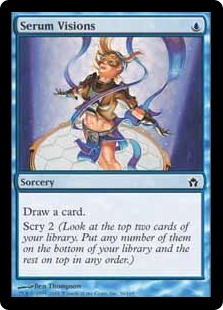 For the first time I can remember, we have Day 1 data from a GP. Long have we lamented its lack, since there's no other way to know the starting population of a tournament. Without that, it's impossible to tell if the Day 2 metagame is a deviation from metagame trends or a simply function of that stating population. The former merits deeper exploration.
For the first time I can remember, we have Day 1 data from a GP. Long have we lamented its lack, since there's no other way to know the starting population of a tournament. Without that, it's impossible to tell if the Day 2 metagame is a deviation from metagame trends or a simply function of that stating population. The former merits deeper exploration.
The most striking aspect of Toronto's Day 1 data is how it mirrors and deviates from the actual metagame, as compiled by MTGTop8. Taking the decks with 4% share or more in the overall metagame and comparing to their Toronto share shows consistency in the top decks with significant deviation elsewhere. It isn't a perfect comparison, but that is to be expected. The entire metagame is an aggregate of all the data that gets reported to MTGTop8, while Toronto's data is just that one event.
| Deck Name | Metagame Share % | Toronto Day 1 % |
|---|---|---|
| Burn | 10 | 11.45 |
| Izzet Phoenix | 9 | 8.14 |
| Dredge | 7 | 5.09 |
| Death's Shadow | 7 | 4.33 |
| Spirits | 6 | 4.20 |
| Tron | 5 | 4.83 |
| UW Control | 4 | 4.45 |
| Humans | 4 | 2.80 |
| Affinity | 4 | 1.53 |
Worth noting is that the sample is only 60% of the starting decklists, but that sample is still large enough to be considered valid. The remaining 40% would have to contain major outliers to substantially change the data or my conclusions.
Burn is on top in both rankings, followed by Izzet Phoenix and Dredge. Burn, Phoenix, Tron, and UW Control all surfaced in proportion to their metagame shares. Other aggro decks were severely underrepresented in Toronto. Dredge is also down from it's overall share, but maintained its 3rd place position. It's natural for there to be variation between overall stats and localized stats, as regional differences exist. However, this particular result is worth looking into.
Going Deep
The decks that maintained their share in Toronto are the two It Decks, Burn and Phoenix, 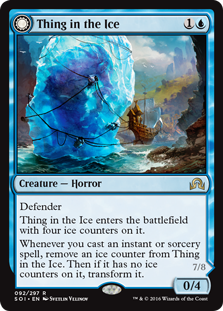 and two stalwart decks, Tron and UW Control. Every creature deck was well below their share.
and two stalwart decks, Tron and UW Control. Every creature deck was well below their share.
I speculate that the two results are linked. Burn and Phoenix have very good matchups against creature decks; the former thanks to its speed and interaction, and the latter because of Thing in the Ice. Mulitple early Phoenixes are certainly hard to race, but they're not a guarantee. Resolving and flipping Thing is far more certain against the removal-light creature decks and devastatingly effective as both a sweeper, tempo swing, and huge threat. The fact that both predator decks are getting the press right now would have turned some players off playing creatures. These trends don't impact Tron or UW Control, so they were free to keep on keeping on.
Conversion Rate Fallacy
That being said, the Day 2 data is in many ways more interesting. However, I disagree with how Henke looks at the data. He organized his chart and subsequently based his conclusion around the Day 2 conversion rate. Doing so gives an inaccurate conclusion: Henke says that Izzet Phoenix is arguably the best deck in Modern, while Burn isn't good. His evidence seems to hold up, but the overall conclusion is flawed.
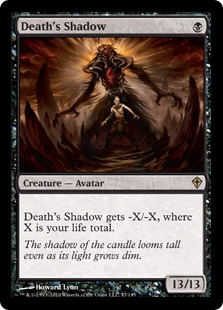 That the most popular decks also have poor Day 2 conversion rates isn't new. In fact, it's par for the course. Part of this is simply statistical probability. The more of a given deck there is in the field, the more likely they are to meet each other, and there can be only one winner. Additionally, popular decks are ones players have on their radar, and have presumably brought hate for. Thus, the more popular decks, in a reasonably fair metagame, should have mediocre-at-best conversion rates.
That the most popular decks also have poor Day 2 conversion rates isn't new. In fact, it's par for the course. Part of this is simply statistical probability. The more of a given deck there is in the field, the more likely they are to meet each other, and there can be only one winner. Additionally, popular decks are ones players have on their radar, and have presumably brought hate for. Thus, the more popular decks, in a reasonably fair metagame, should have mediocre-at-best conversion rates.
Conversely, it is natural for unpopular decks to do well on conversion. If only two players pilot a deck and one makes the cut, that's a 50% rate. They're also more likely to be specialists of that deck. Mastery is key to success in Modern, and there's no greater master than an enthusiast. Conversion rates are therefore not inherently a measure of success or failure for any deck.
The Day 2 Difference
I'm looking at the actual numbers that made Day 2 rather than their conversion rates. Looking at all the decks with 7 copies or more is very suggestive of the overall metagame.
| Deck Name | Total |
|---|---|
| Others | 27 |
| Izzet Phoenix | 24 |
| Burn | 18 |
| Dredge | 13 |
| Amulet Titan | 11 |
| Humans | 10 |
| Tron | 8 |
| Hardened Scales | 7 |
| RG Valakut | 7 |
| Spirits | 7 |
| Jeskai Control | 7 |
The most indicative results is that "Others" is the top result, reflective of how diverse Modern really is. It also backs up my earlier argument about low population decks, because the Others category was for every deck in the initial sample with fewer than 8 pilots. Rogue decks flying under the radar get a lot of wins thanks to confusion.
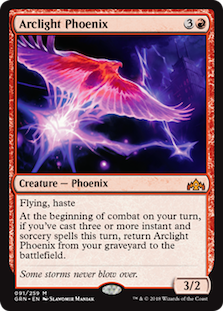 The top three individual decks are still on top, but now Phoenix displaces Burn for the top slot. That they're still on top reaffirms their overall metagame power and potential. The fact that Phoenix surpassed Burn is almost certainly drag caused by Light Up the Stage, as Henke argued. I mentioned last week that it hasn't been impressive against me, and it appears that it simply isn't necessary at all. Once Burn players get the memo, I'd expect their win rates to go back up.
The top three individual decks are still on top, but now Phoenix displaces Burn for the top slot. That they're still on top reaffirms their overall metagame power and potential. The fact that Phoenix surpassed Burn is almost certainly drag caused by Light Up the Stage, as Henke argued. I mentioned last week that it hasn't been impressive against me, and it appears that it simply isn't necessary at all. Once Burn players get the memo, I'd expect their win rates to go back up.
Amulet Titan suddenly appears in the data and Humans has dramatically improved its position. That Humans is doing well in the standings reaffirms the deck's actual power, despite its apparent drop-off in metagame charts. Amulet suddenly appearing is to be expected. It is not and has never been a popular deck, but it has a very dedicated following. These devotees will have an advantage over other players just from experience. The same could be said for the rest of the sample.
The Metagame Truth
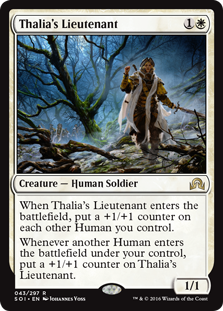 One conclusion that could be reached from this data is that the data derived metagame picture is remarkably accurate. However, it is also possible to look at how many decks fall under the Others category, see that power rankings have no relationship to what actually wins tournaments, and conclude that Modern doesn't have a metagame. If anything could win at any time and there's no guarantee of seeing a given deck in a tournament, how can there be a metagame? I think both of these viewpoints miss the big picture: Modern has a metagame, but it works differently than other formats.
One conclusion that could be reached from this data is that the data derived metagame picture is remarkably accurate. However, it is also possible to look at how many decks fall under the Others category, see that power rankings have no relationship to what actually wins tournaments, and conclude that Modern doesn't have a metagame. If anything could win at any time and there's no guarantee of seeing a given deck in a tournament, how can there be a metagame? I think both of these viewpoints miss the big picture: Modern has a metagame, but it works differently than other formats.
Standard has a very defined and predictable metagame. Every time a new set is released, the metagame changes as decks gain or lose viability. Within a week or two, the heavy hitters will be well established, the matchups and sideboarding strategies will be worked out, and players will know what they're taking to tournaments. Every subsequent week until the next set release is about minor adjustments based on expected populations. The meta is stable and predictable.
 Legacy is defined by Brainstorm vs. Anti-Brainstorm decks. The former are decks that play lots of cantrips and low land counts, seeking to find the most powerful cards in the format. The later all attack the former, either by shutting down some aspect of their deck or ignoring them. This has proven to be a very stable equilibrium for a long time, and the metagame doesn't shift very much. Individual decks in each category can change, but they're not that different from predecessors.
Legacy is defined by Brainstorm vs. Anti-Brainstorm decks. The former are decks that play lots of cantrips and low land counts, seeking to find the most powerful cards in the format. The later all attack the former, either by shutting down some aspect of their deck or ignoring them. This has proven to be a very stable equilibrium for a long time, and the metagame doesn't shift very much. Individual decks in each category can change, but they're not that different from predecessors.
In contrast, Modern apparently has a constantly shifting metagame. Since Splinter Twin was banned, there hasn't been a deck that sat atop the rankings for more than a year. Decks rise and fall constantly. However, they don't disappear after falling from grace. Instead, they settle into the metagame and become Just Another Deck. Death's Shadow was 2017's boogeyman; Humans was in 2018. Neither is anything special anymore, but they're still doing well. This is the key to Modern: decks of the same tier have the same power level. Their ranking within the tier is primarily determined by popularity. The new deck rises, players learn how to beat it, they succeed, and the deck fades from view. Barring bannings, the metagame just absorbs decks, and they become no big deal. The key to understanding the metagame in Modern lies in recognizing which tier a deck belongs to and planning accordingly.
No Best Deck
In this context, the idea that a Best Deck exists in Modern is false. It is more accurate to say that at any given point, a deck is more visible and popular while being better positioned than others. New decks attract attention and players away from established decks. This magnetism inflates their presence in tournaments. Once the initial surprise wears off, players will learn how to play against it. If the deck has enough inherent power, it can maintain it's position for a time, but the rest of the format will target it and it will be brought down. Subsequently, if it has a unique niche, it will simply become part of the metagame in a tier equal to its power vis-à-vis the rest of Modern.
Popularity Contest
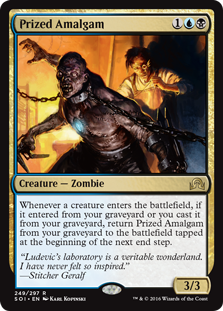 Looking at the big ticket events since Guilds of Ravnica released shows Arclight Phoenix having a huge impact on Modern. It's consistently placing well and at a very high rate. Nothing appears to prey on it, so how couldn't it be the best deck in Modern?
Looking at the big ticket events since Guilds of Ravnica released shows Arclight Phoenix having a huge impact on Modern. It's consistently placing well and at a very high rate. Nothing appears to prey on it, so how couldn't it be the best deck in Modern?
First of all, the exact same thing was said of Death's Shadow, to the point that there were calls for a ban. Secondly, that's only true of some events. The February 17 MOCS was dominated by Dredge, who took home half the Top 8; Izzet Phoenix failed to crack the Top 16. The Mythic Qualifier in Strasbourg was all about BG Rock, not Phoenix. New, visible, and popular decks naturally do well in big events because lots of players pick them up.
Double-Edged Sword
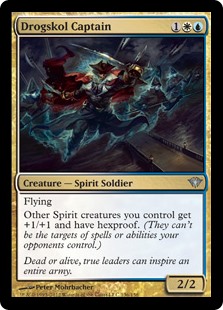 This popularity comes at a price: chiefly, a big target on the deck. Grixis Death's Shadow didn't suffer an actual power drop or lose cards and subsequently disappear from Modern. Instead, the format adapted, and its relative power diminished. Players learned how to fight back and eventually defeat the deck. The same thing happened with Humans and Spirits. Saying a deck is good because it is doing well is not meaningful. Any popular deck will necessarily do well. The key is longevity. Once everyone adapts to Phoenix, will it remain a factor? My guess is yes, because every other recent new deck has, but there's no way to know.
This popularity comes at a price: chiefly, a big target on the deck. Grixis Death's Shadow didn't suffer an actual power drop or lose cards and subsequently disappear from Modern. Instead, the format adapted, and its relative power diminished. Players learned how to fight back and eventually defeat the deck. The same thing happened with Humans and Spirits. Saying a deck is good because it is doing well is not meaningful. Any popular deck will necessarily do well. The key is longevity. Once everyone adapts to Phoenix, will it remain a factor? My guess is yes, because every other recent new deck has, but there's no way to know.
Modern's Different
The actual best decks in Modern are those that last year after year, despite no attention. Burn is the classic example. Despite peaks and throughs of popularity and visibility, it always performs. The same is true of Tron or UW Control. The New Hotness is just that, and it will eventually cool. The question is whether it can join the long-timers in the high tiers or just fades away.




I hope I’m not conflating things too much when I open this particular can of worms, but I can’t help it. I agree with what you’re saying with regards to the power level of a given deck. I believe that all too often hype is confused for power and given the reactionary nature of much of the community this leads to ban talk (something I’m very guilty myself–but am trying to bring under control). Which, of course, you addressed, but I can’t help but look at some of the hype decks we’ve seen over the years that have had staying power and–after examining what makes them tick–I think we can sometimes see that like cards between lists are more than examples of correlation, they’re examples of causation, and in this way I think that ban talk is appropriate. I feel that it’s relevant to discuss individual cards within individual decks to discern the impact of a given card on the larger metagame. So I hope I’m not to far out there in left field when I bring this up.
Let’s look at KCI, Affinity, and Lantern control…all powerful decks, all attack from different angles, all have had staying power in one form or another, and all have sat atop the metagame for a period of time (albeit not permanently). Looking at these lists, can we really look at Mox Opal and say that there isn’t a common denominator here? Isn’t it fair to at least discuss the banning of this card, given what we’ve seen it do?
I’d argue the same could be said of Faithless Looting. Dredge, Phoenix, Shadow, Hollow One, Bridgevine–given the power level of these decks and the relative staying power (granted, H1 and Bridgevine have dropped off but I’d argue are still relevant), shouldn’t we examine Faithless Looting? Or Ancient Stirrings?
I know that this isn’t a terribly productive conversation to have, after all, all anyone needs to do is point to a card like Lightning Bolt and say something like, “Wanna ban this too?” I recognize that talk like this encourages eye rolling in much of the community, after all only Wizards has the power to do anything about it, so what’s really the point of bringing it up. But I hope that these are the sort of conversations they are having, and I hope that debating these things here inspires debate at the highest levels.
Wizards doesn’t have much of a history of banning enablers, and in their KCI ban, they explicitly stated that they think strong enablers are fine and even beneficial to Modern when they appear in/enable multiple decks at once. That’s the case with all the cards you mentioned. More on enablers and bannings in this article: https://quietspeculation.com/modern-top-5-enablers/